Alan Arthur Suits lives and resides in Santa Fe, New Mexico USA. He built 2 sitars, several renaissance luthes and other similar musical instruments. This is his 2nd sitar, a “classic” Ravi Shankar basic design for Kharaj Pancham tuning. Alan is a self-taught luthier with more than 20 years experience.
His remarks:
I wanted to have a ‘sitar of my dreams’ and finally decided, instead of trying to order one from India, that I’d do it myself! I have played and repaired sitars for over 40 years and had experience building Renaissance lutes and Middle Eastern ouds. I thought that by having complete say over wood selection, design, materials and details, I would get what I wanted rather than going through the inevitable disappointments I would have trying to work out details across several continents.
This sitar is built with gourds form Arizona and North Carolina. There are a number of gourd lovers who can grow gourds that are perfectly good for tumbas. The wood is all Spanish Cedar which is virtually identical to Tun and is preferred for building flamenco guitars. The pegs are Bolivian rosewood, a very nice specie. The nuts are camel bone and the bridge is Indonesian rosewood and african blackwood for the jiwari surface. Blackwood is one of the hardest known woods and is very difficult to work but finishes beautifully and it did work superbly for the jiwari.
All the white ornaments are 70 year old ivory form recycled piano keys. I would never approve using fresh ivory! but there are probably thousands of abandoned pianos in basements, attics and garages all over. I felt that in a way it would be showing some honor to the long gone elephants,rather than allowing the ivory to molder away uselessly. If I had a source for thin panels of bone I would have been happy to use that. I feel plastic has no place on instruments that I build and always use natural materials.
I tried to reduce weight wherever possible. Besides the artistic effect, I think that less carving on the table can only be good for sound production. The soundhole seems to make a real difference in projection and volume too. I have seen sitars made with soundholes, some were of considerable age, so this isn’t my new innovation!
I finished this sitar with the simplest French polish, only shellac dissolved in grain alcohol. Finishing is truly one of the most challenging issues in sitar making. I am very wary of using any solvents. Turpentine itself is actually very toxic, despite its pleasant smell. So, this sitar doesn’t have any bad chemicals in the varnish.
My friend Ustad Roshan Jamal Bhartiya, a sitariya of many generations of musicians, has played this sitar and was impressed and also unbelieving that a ‘gora’ could make a sitar like this. But, here it is.
Alan Arthur Suits
You can see some more pics of the completed sitar on his site: click here.

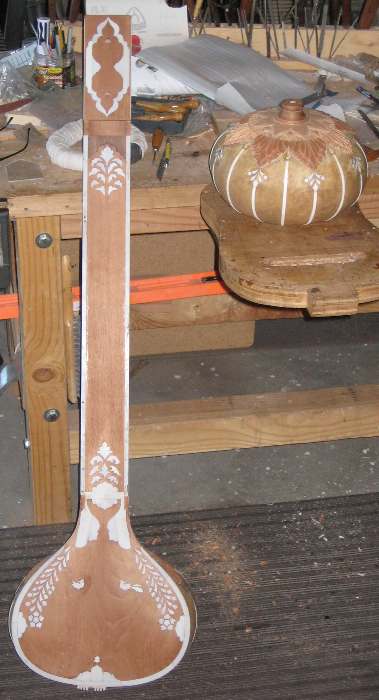
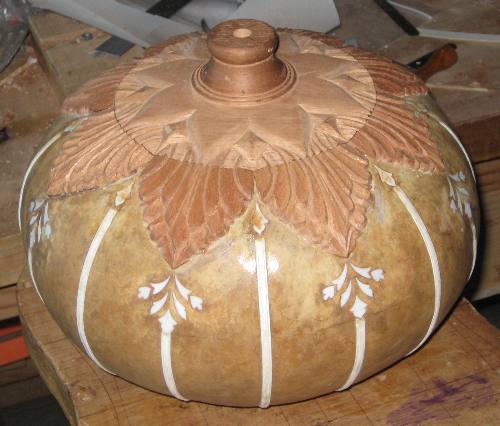
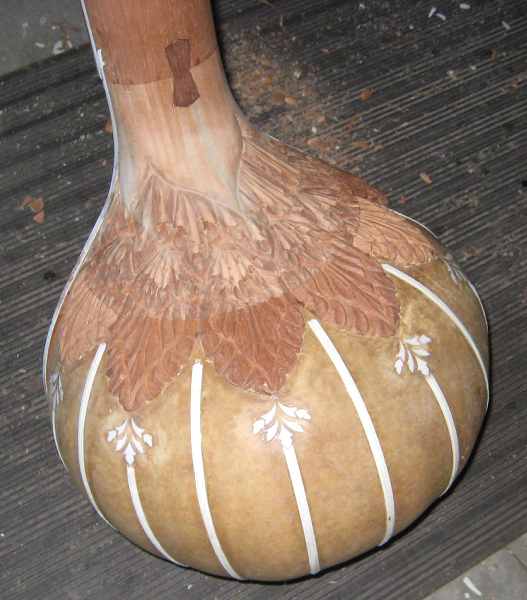
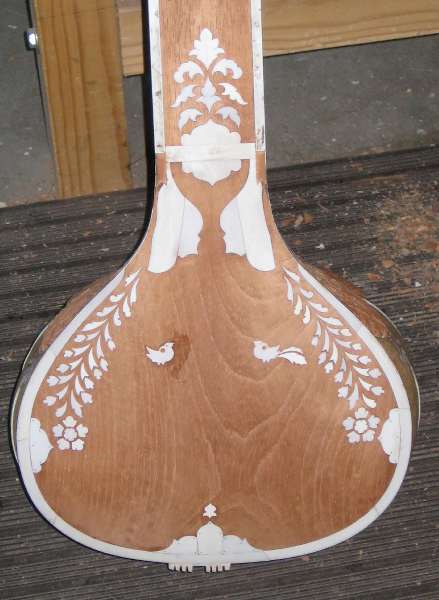
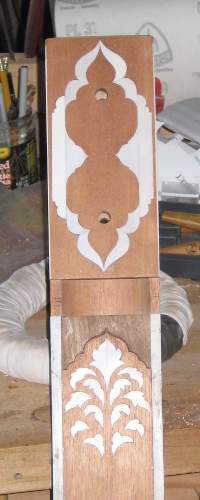
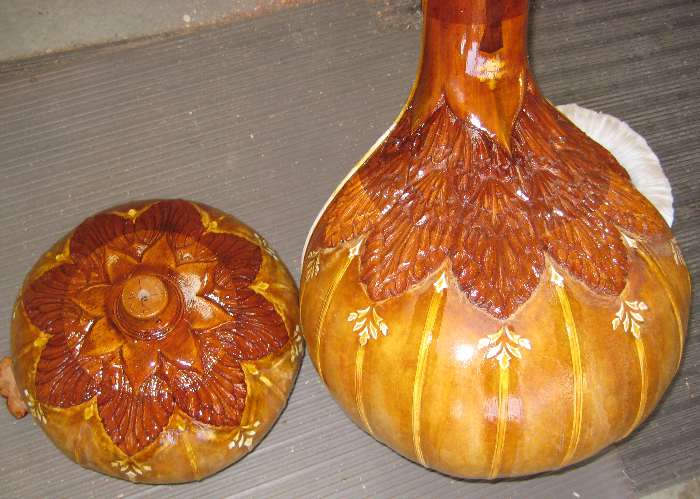
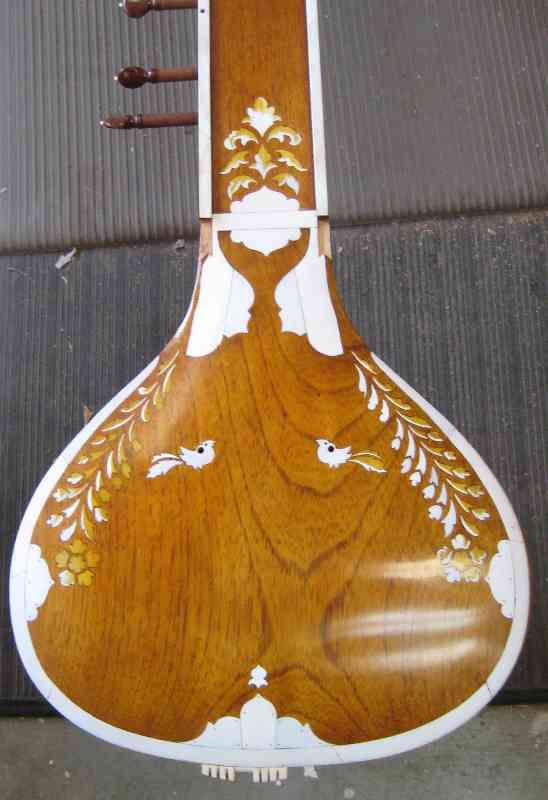
Hello Alan
I have a basic sitar- I paid $400 for 20 years ago. It needs strings & tuning. Is this something you would be willing to do?
Thank you- Jamie Christie
Alan, I am a music teacher up in Angel Fire, and I have a sitar that was here when I got the job. It’s a beautiful instrument, but it’s missing a lot of the strings, and the back (bowl) is cracked as if someone dropped it. I am wondering if you would even consider looking at it (I can send you pictures), and if you could give me a rough estimate of what it would cost to fix, or if it’s even worth fixing. I have a limited budget, so I can’t afford to spend much on the repair. I look forward to hearing from you soon.
Thank you,
Billy Archuleta
hello Billy! sorry for the long delay, I just saw thius message now! feel free to email me some pix.Cracked gourds are osmetime easily reapired,depends on the damage, new strings, no problem. regards- Alan